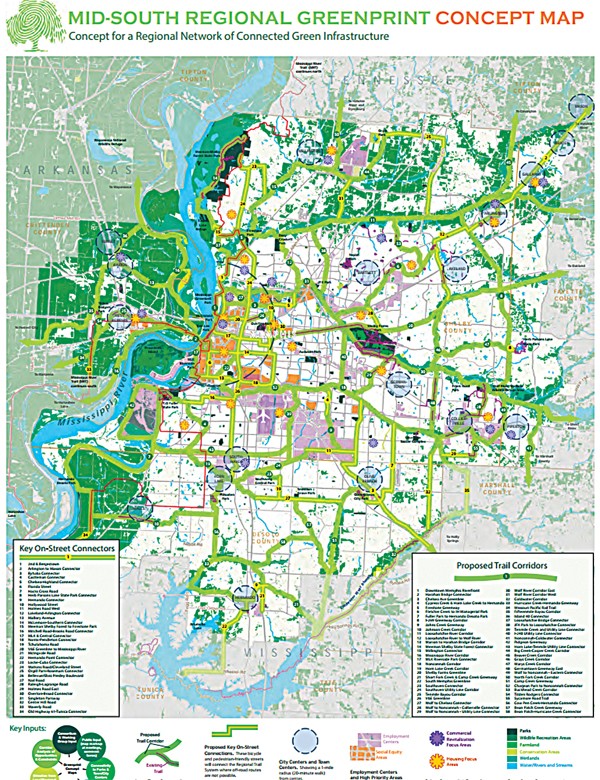The Mid-South Regional Greenprint and Sustainability Plan has laid out ideas for how the region can become more eco-friendly by 2040.
The greenprint, which outlines everything from sustainable uses for area green spaces to improving public transit, was released on February 5th after two years of development and research. A vision plan for the greenprint was initially released in 2013.
In 2011, the county was given a $2.6 million grant to prepare for the plan, which aims to “enhance regional sustainability by establishing a unified vision for a region-wide network of green space areas.”
The plan covers Shelby County; Fayette County; Crittenden County, Arkansas; and DeSoto County, Mississippi.

By setting the stage for green-focused efforts, the plan also aims to set in motion a healthier Mid-South by providing more options in terms of transportation, food, housing, and physical activity.
One of the main focuses of the plan is transportation with a focus on providing more bicycle- and public-transit options. Although Memphis fares better than its surrounding counties when it comes to public transit, the plan looks at improving those options for the entire Mid-South.
“While downtown Memphis is a critical hub for population, employment, and commerce, the spread of population and employment density extends throughout the region, suggesting the need for greater connectivity to population and employment across all modes of transportation,” the plan reads.
In the greenprint, 196 miles of bicycle-friendly streets are laid out, including areas in which off-road routes are not feasible. Within these miles, 41 existing on-road bicycle facilities already align with the concept.
The plan also aims to growing a network of “green space hubs,” as well as improving existing parks in the area.
Major hubs that will be improved upon include the West Memphis Eco-Park, named as a “critical hub” in the plan, which will be across the Harahan Bridge on the Arkansas side; the eight-acre Friendship Park project in east Shelby County; and the new plan for the Loosahatchie Rver Greenway in Arlington, among others in Millington and DeSoto County.
The sustainability plan also describes efforts to provide fair housing by increasing access to neighborhoods for people with disabilities and those with lower incomes, as well as access to public transportation and walkability. The goal is to provide more pedestrian-friendly options for neighborhoods.
One example in the plan is part of the Frayser 2020 development, a neighborhood council-driven project that would create a new town center in the area. The town center at Frayser Boulevard and Overton Crossing will include a town square, social services, retail, and a transit hub.
The next step for the greenprint is government approval in the various muncipalites named in the plan. The Shelby County Commission has already approved the plan.
 Bianca Phillips
Bianca Phillips